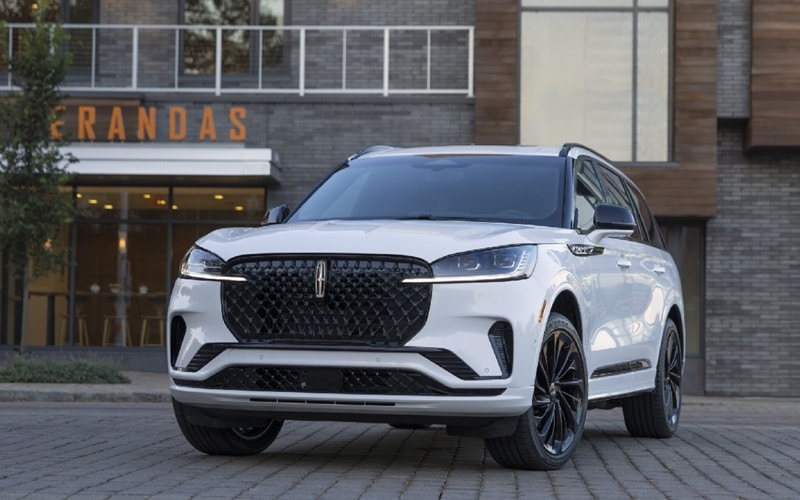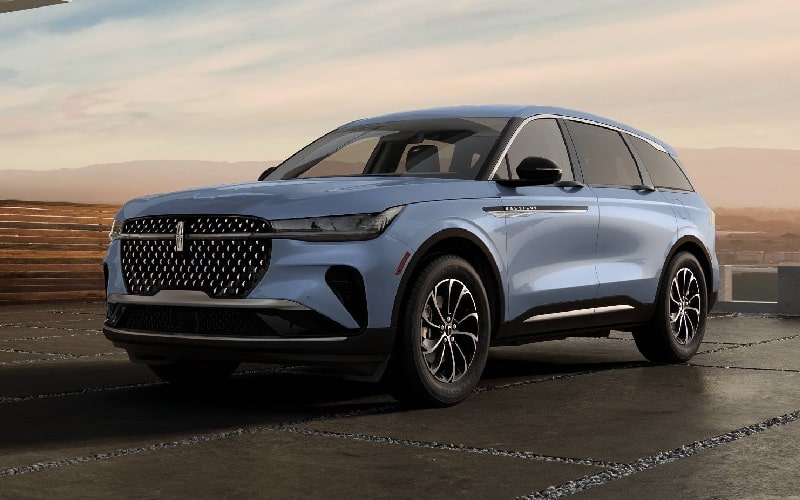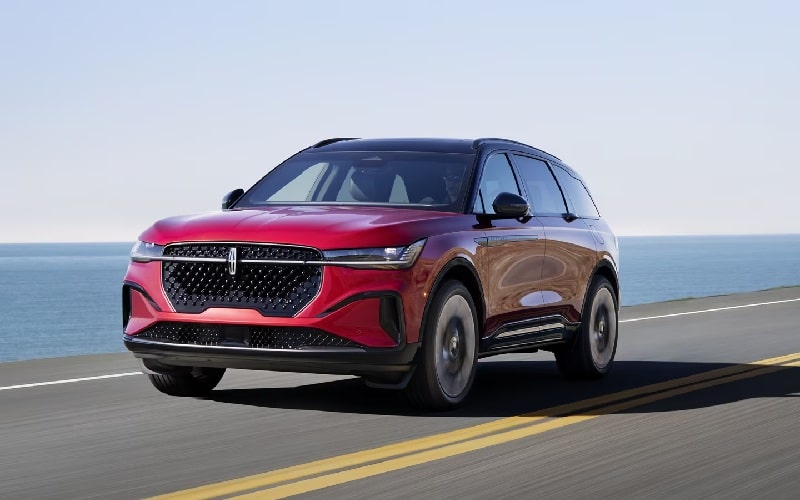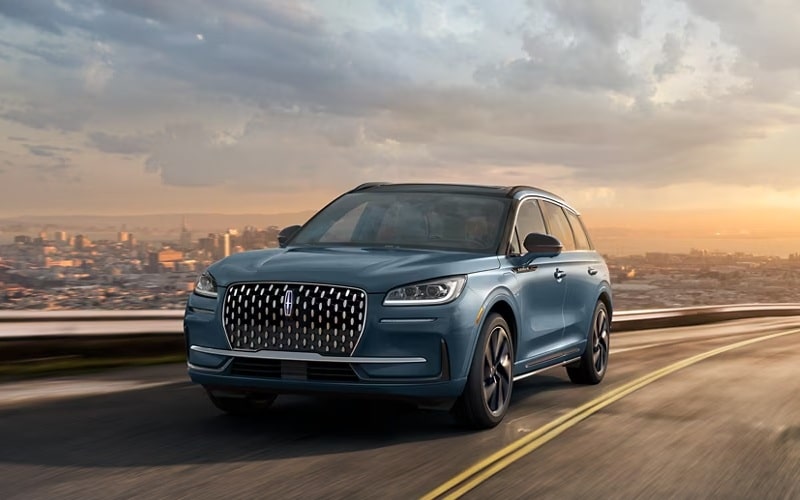Lincoln SUV Models: Fuel Consumption Comparison
The Lincoln SUV lineup continues to define the luxury segment, combining cutting-edge technology, versatile performance, and refined design. For discerning drivers who prioritize both opulence and efficiency, understanding the fuel consumption characteristics of each model is essential. Let’s take a closer look at how the latest Lincoln SUV range performs in terms of fuel efficiency, […]
The Lincoln SUV lineup continues to define the luxury segment, combining cutting-edge technology, versatile performance, and refined design. For discerning drivers who prioritize both opulence and efficiency, understanding the fuel consumption characteristics of each model is essential. Let’s take a closer look at how the latest Lincoln SUV range performs in terms of fuel efficiency, ranking from the most economical to those designed for maximum power and capability.

Corsair Grand Touring: The Efficiency Leader
At the forefront of the Lincoln fuel-efficient offerings stands the Corsair Grand Touring, a plug-in hybrid electric vehicle (PHEV) that achieves remarkable economy without compromising on luxury.
Powertrain and Performance
The Corsair Grand Touring combines a 2.5-litre Atkinson-cycle four-cylinder engine with an electric motor to deliver a total system output of 266 horsepower. This sophisticated powertrain is paired with a continuously variable transmission (CVT) and standard all-wheel drive, providing responsive performance alongside exceptional efficiency.
Fuel Consumption Figures
With an impressive combined rating of just 3.1 Le/100 km (litres equivalent per 100 kilometres), the Corsair Grand Touring stands as the most efficient Lincoln SUV. This remarkable economy is complemented by an all-electric driving range of approximately 40 kilometres, allowing many daily commutes to be completed without using any gasoline at all.
The plug-in system seamlessly transitions between electric and gasoline power, ensuring that longer journeys remain equally efficient. For drivers who can charge regularly, the Corsair Grand Touring represents the pinnacle of Lincoln efficiency.
Aviator Grand Touring: Power Meets Efficiency
The Aviator Grand Touring demonstrates that efficiency and performance can coexist in a midsize luxury SUV package.
Powertrain and Performance
This plug-in hybrid variant pairs a 3.0-litre twin-turbocharged V6 engine with an electric motor to produce a combined 494 horsepower and 854 Nm of torque—making it the most powerful Lincoln SUV available. The system utilizes a modulated continuously variable transmission and comes standard with all-wheel drive.
Fuel Consumption Figures
Despite its impressive power output, the Aviator Grand Touring achieves a combined fuel consumption rating of 4.2 Le/100 km. It offers an all-electric range of approximately 34 kilometres, allowing for emission-free driving during short trips and commutes.
The significant efficiency advantage over the standard Aviator makes the Grand Touring an attractive option for those who want both power and economy in their luxury SUV.
Nautilus Hybrid: Balanced Efficiency
The Nautilus Hybrid presents a compelling midpoint in the Lincoln efficiency spectrum, offering impressive economy without the need for plug-in charging.
Powertrain and Performance
The Nautilus Hybrid employs a 2.0-litre turbocharged four-cylinder engine paired with an electric motor to deliver a total system output of 310 horsepower. This setup utilizes a continuously variable transmission and comes standard with all-wheel drive, providing smooth acceleration and refined performance.
Fuel Consumption Figures
With a combined rating of 7.7 L/100 km (7.9 city, 7.6 highway), the Nautilus Hybrid delivers excellent efficiency for a midsize luxury SUV. The system’s ability to recover energy during braking and deceleration helps maximize fuel economy without requiring external charging.
This balanced approach to efficiency makes the Nautilus Hybrid well-suited for drivers seeking improved fuel economy without adopting a plug-in lifestyle.
Corsair (Standard): Compact Efficiency
The standard Lincoln Corsair with its conventional gasoline engine still offers competitive fuel economy in the compact luxury SUV segment.
Powertrain and Performance
Equipped with a 2.0-litre turbocharged four-cylinder engine producing 250 horsepower, the standard Corsair delivers responsive performance through an 8-speed automatic transmission. All-wheel drive is available as either standard or optional, depending on the trim level.
Fuel Consumption Figures
The Corsair achieves a combined fuel consumption rating of 9.6 L/100 km (10.8 city, 8.1 highway), making it the most efficient non-electrified Lincoln SUV. Its compact dimensions and efficient powertrain contribute to this impressive economy.
For drivers who prefer a traditional gasoline powertrain or aren’t ready to transition to electrified vehicles, the standard Corsair offers an excellent balance of luxury, performance, and efficiency.
Nautilus (Standard): Midsize Comfort
The standard Nautilus with its conventional gasoline engine balances midsize luxury with reasonable fuel economy.
Powertrain and Performance
The Nautilus features a 2.0-litre turbocharged four-cylinder engine generating 250 horsepower and 280 lb-ft of torque. This powerplant pairs with an 8-speed automatic transmission and is available with front-wheel drive or all-wheel drive.
Fuel Consumption Figures
With a combined rating of 9.8 L/100 km (11.2 city, 8.1 highway), the standard Nautilus offers competitive efficiency for its size and class. The all-wheel-drive system intelligently distributes power, optimizing traction while minimizing unnecessary fuel consumption.
The Nautilus offers a comfortable and refined driving experience while maintaining reasonable efficiency for drivers who value space and luxury.
Aviator: Performance Priority
The standard Aviator emphasizes performance and capability while still offering respectable fuel economy for its size and power output.
Powertrain and Performance
Under the hood, the Aviator houses a 3.0-litre twin-turbocharged V6 engine producing 400 horsepower and 563 Nm of torque. This substantial powerplant connects to a 10-speed automatic transmission and comes standard with all-wheel drive in most markets.
Fuel Consumption Figures
The Aviator records a combined fuel consumption rating of 11.9 L/100 km (13.8 city, 9.5 highway). While these figures reflect its performance-oriented nature, they remain competitive within the midsize luxury SUV segment, especially considering the power output and capabilities.
For drivers who prioritize performance, space, and luxury over maximum efficiency, the standard Aviator delivers an engaging driving experience without excessive fuel consumption.
Navigator: Full-Size Luxury
As the flagship Lincoln SUV, the Navigator prioritizes space, capability, and opulence, with fuel efficiency reflecting its substantial size and power.
Powertrain and Performance
The Navigator features a 3.5-litre twin-turbocharged V6 engine delivering 440 horsepower and 691 Nm of torque. This robust powerplant pairs with a 10-speed automatic transmission and is available with rear-wheel drive or four-wheel drive.
Fuel Consumption Figures
With a combined rating of 13.1 L/100 km (14.7 city, 11.2 highway), the Navigator offers reasonable efficiency considering its size, weight, and capabilities. The extended-wheelbase Navigator L sees a slight increase to 13.4 L/100 km combined (15.0 city, 11.5 highway) due to its additional length and weight.
Despite being the least efficient model in the Lincoln lineup, the fuel consumption remains competitive within the full-size luxury SUV segment, where spaciousness and capability typically take precedence over economy.
The Future of Lincoln SUV Efficiency
Lincoln continues to enhance the efficiency of its SUV lineup through advancements in powertrain technology, aerodynamics, and vehicle lightweighting. The brand’s commitment to electrification is evident in its expansion of hybrid and plug-in hybrid offerings, providing customers with increasingly efficient luxury options.
With the automotive industry’s ongoing transition toward electrification, Lincoln is well-positioned to maintain its competitive edge in the luxury SUV market. The significant efficiency advantages demonstrated by the Corsair Grand Touring and Aviator Grand Touring models highlight the brand’s successful integration of electrification technology with the refinement and luxury expected from Lincoln.
Whether you prioritize maximum efficiency, performance, space, or a balance of all three, the diverse Lincoln SUV lineup offers models suited to various preferences and driving habits. By understanding each model’s fuel consumption characteristics, you can select the Lincoln SUV that best aligns with your lifestyle and efficiency goals.
Five Facts About Lincoln SUV Fuel Consumption
- The Corsair Grand Touring can travel up to 40 kilometres on electric power alone—enough to cover the average daily commute for many drivers without using a drop of gasoline.
- The Lincoln hybrid powertrains use regenerative braking systems that can capture up to 94% of the energy normally lost during deceleration, converting it to electricity to recharge the battery.
- The Navigator 10-speed automatic transmission features an exceptionally wide ratio spread, enabling the engine to operate in its most efficient range more frequently than traditional 6-speed transmissions, resulting in improved fuel economy by up to 5%.
- The Aviator Grand Touring’s combined 494 horsepower makes it more powerful than many sports cars, yet it achieves a fuel consumption equivalent to that of a compact economy car when operating in its most efficient mode.
- The Lincoln drive mode selector systems can adjust up to 12 different vehicle parameters to optimize fuel efficiency, including throttle response, transmission shift patterns, and climate control settings.
Is a Lincoln SUV Right for You?
Which Lincoln model offers the best balance between luxury features and fuel economy?
- The Corsair Grand Touring provides the optimal balance, offering premium amenities and advanced technology while achieving exceptional fuel economy through its plug-in hybrid system. For those who can charge regularly at home or work, it represents the best of both worlds.
How does the Lincoln hybrid technology compare to other luxury brands?
- It utilizes the latest electrification technology from parent company Ford, providing competitive efficiency while maintaining the refined driving experience expected from a luxury vehicle. The seamless integration of electric and gasoline power creates a driving experience that feels natural while delivering significant fuel savings.
Can Lincoln SUVs operate effectively in cold weather without compromising fuel efficiency?
- All hybrid and plug-in hybrid models include sophisticated thermal management systems that help maintain battery performance in cold conditions. While extreme cold will reduce electric range and overall efficiency, the system automatically adjusts to deliver optimal performance regardless of temperature.
What are the main differences in driving experience between standard and hybrid Lincoln models?
- Hybrid and plug-in hybrid models typically offer more immediate torque delivery from their electric motors, resulting in quicker acceleration from a stop. They also feature smoother operation due to the electric assist during acceleration and the elimination of transmission downshifts in many situations. The regenerative braking system creates a slightly different feel when slowing down, but quickly becomes intuitive with regular driving.
Are there significant maintenance differences between standard and electrified Lincoln SUVs?
- Hybrid and plug-in hybrid models actually require less frequent brake service due to their regenerative braking systems, which reduce wear on the conventional friction brakes. While advanced technology may suggest higher maintenance costs, many owners report lower overall maintenance expenses due to reduced wear on specific components.
*Disclaimer: Content contained in this post is for informational purposes only and may include features and options from US or international models. Please contact the dealership for more information or to confirm vehicle, feature availability.*


